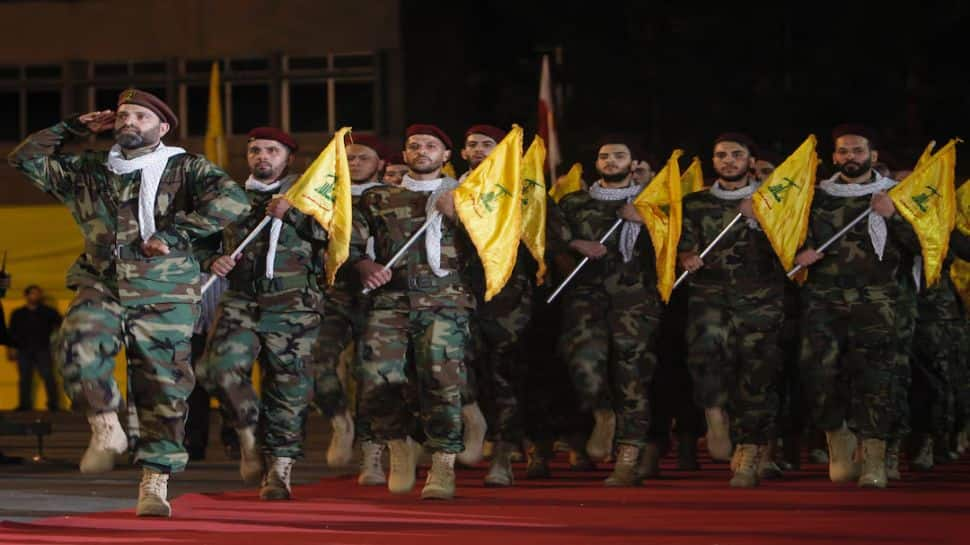New Delhi: Lebanon’s powerful militia Hezbollah is silently attempting to regain its footing a year after Israel assassinated its chief Hassan Nasrallah. Though significantly weakened, analysts indicate that the group remains capable of exerting influence and creating domestic turmoil while trying to secure its political position.
Long regarded as the most formidable nonstate armed actor in the region, Hezbollah’s power has visibly waned. Pressure from domestic and international actors to disarm entirely has intensified, and the experts warn that mishandling these pressures could provoke internal strife and unpredictable responses from the group.
Led by Naim Qassem, Hezbollah’s leadership has signaled a continued refusal to relinquish arms. Public addresses at Nasrallah’s tomb have reiterated that the militia intends to maintain its weapons and resist any efforts serving Israeli interests.
The conflict escalated on October 8, 2023, immediately following Israel’s war on Gaza and continued until September 2024. Israeli military incursions killed thousands in Lebanon, injured many more and displaced hundreds of thousands. By the ceasefire in November 2024, Hezbollah had lost significant leadership, including Nasrallah, leaving the group in a weakened state.
Ceasefire terms were loosely defined. Hezbollah was expected to halt attacks in southern Lebanon while Israel withdrew its forces. However, Israel and the United States soon demanded total disarmament. Domestic and regional opponents amplified these calls, and some of Hezbollah’s allies voiced support for surrendering arms.
The Lebanese government assigned the armed forces to develop a plan to disarm Hezbollah in September 2025. Meanwhile, Israel continued air and drone strikes on southern Lebanon, prompting the United Nations Interim Force in Lebanon (UNIFIL) to report repeated violations of the ceasefire.
Despite media speculation of a Hezbollah resurgence, the group has claimed only one attack since the ceasefire. Analysts suggest Hezbollah no longer poses a direct military threat to Israel, indicating that any Israeli action would serve strategic rather than reactive purposes.
Hezbollah and supporters argue that Israel’s ongoing violations and occupation justify maintaining defensive capabilities. The experts say that deterrence requires sustained capability within a broader political framework.
The term “regrouping” is debated among experts. Observers agree that Hezbollah cannot match its pre-war missile and rocket capabilities, but it may reorganise to become smaller, more agile and tactically focussed. Leadership attrition, compromised communications and command disruptions have left the group diminished. Attempts to smuggle or produce weapons under intense surveillance suggest that any recovery will be partial and localised.
The loss of Syria’s Assad regime in December further cut Hezbollah’s direct access to Iranian arms and funding. Analysts highlight that the militia is exploring political leverage, signalling to regional actors such as Saudi Arabia that its weapons are intended only for Israel. This approach reflects an awareness of Lebanon’s shifting political realities and the group’s constrained options.
Hezbollah’s influence has also diminished in Lebanon’s domestic politics. The election of President Joseph Aoun and Prime Minister Nawaf Salam proceeded without the group’s preferred candidates, highlighting its reduced capacity to control government formation.
Analysts suggest Hezbollah is reliant on foreign aid for reconstruction of war-damaged constituencies, but funds remain contested amid calls for disarmament and banking reforms.
Despite this, Hezbollah has avoided major provocations since the war. Occasional symbolic acts, such as projecting Nasrallah’s image onto Beirut’s Raouche Rocks, show enduring public support while refraining from violent escalation.
The observers indicate that the group’s potential military regrouping is more likely concentrated in Lebanon’s Bekaa Valley rather than the south.
There are signs of evolving strategy. Some Hezbollah allies in parliament have referenced implementing the 1989 Ta’ef Accord, suggesting that achieving better political representation could provide leverage in discussions about weapons retention.
The analysts indicate that Hezbollah may seek compromises, guided by Iran, to regain influence without direct military confrontation.
Pressure from the United States, including a $14.2 million aid package for Lebanon’s military, intensifies the demand for disarmament. US officials have openly called for Hezbollah’s removal, but Lebanon’s army has resisted enforcing a strict timetable for fear of triggering internal conflict.
The observers warn that forcibly disarming Hezbollah could fracture the military along sectarian lines, reminiscent of Lebanon’s civil war dynamics.
The experts agree that confrontation is a worst-case scenario. Current restraint reflects both fatigue among Hezbollah supporters and growing support for the Lebanese state. The group appears to be cautiously recalibrating its military and political posture, balancing survival, influence and regional realities.

